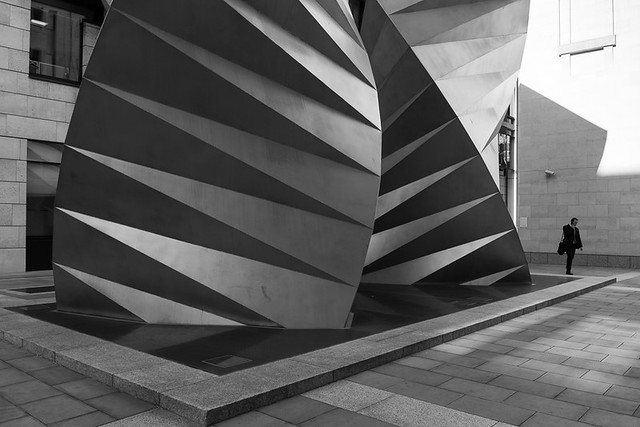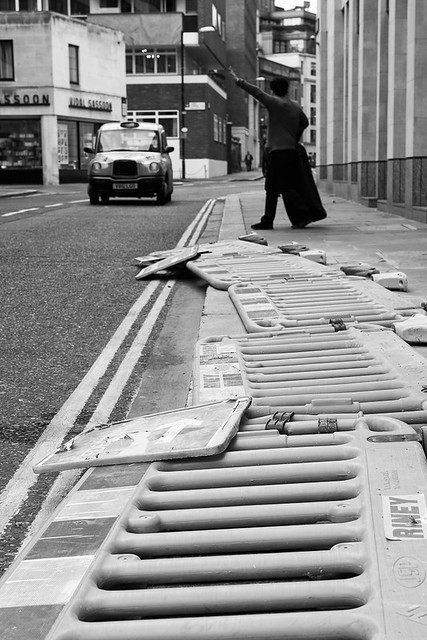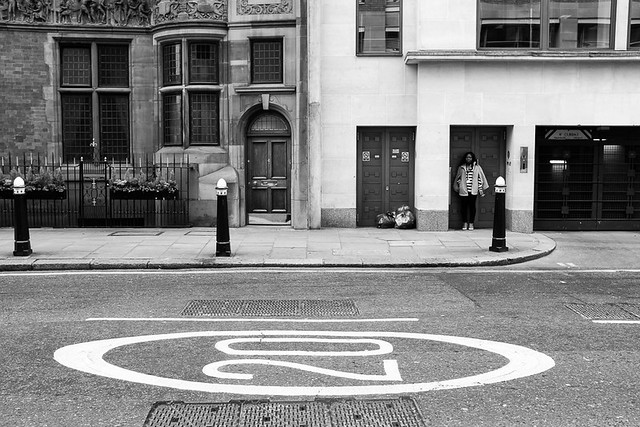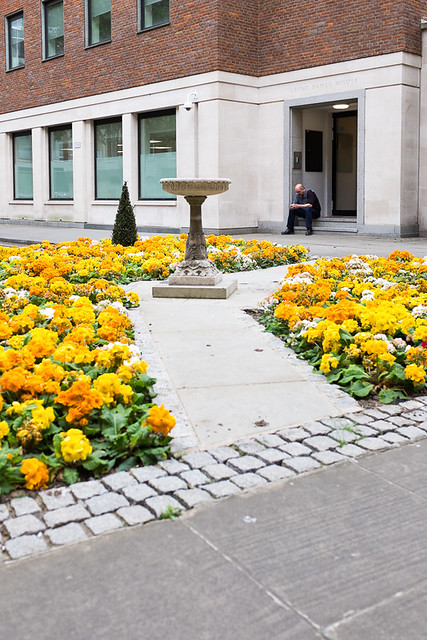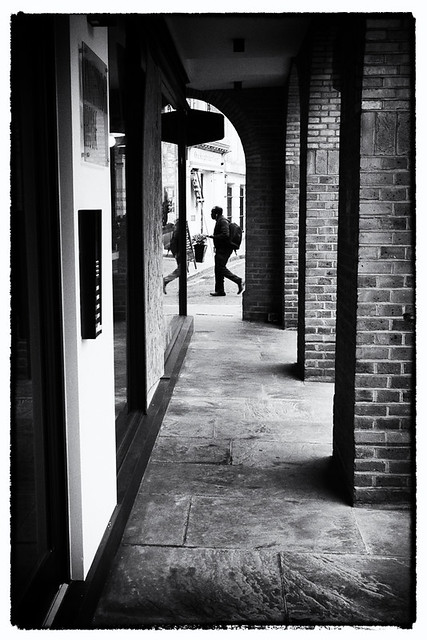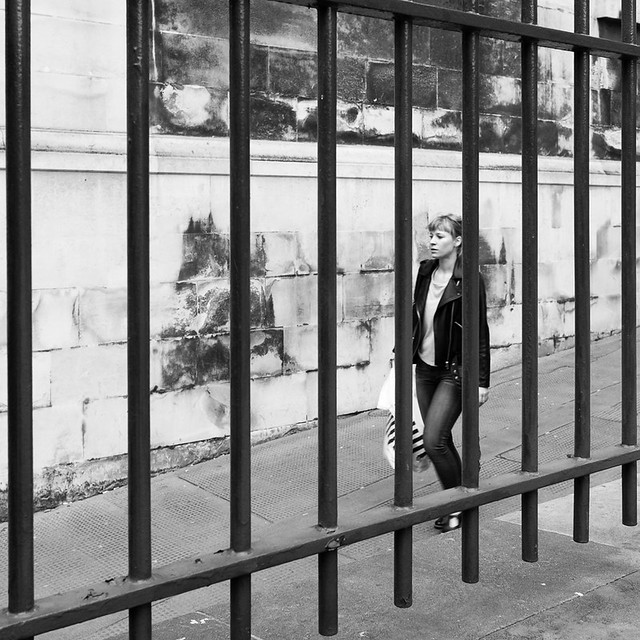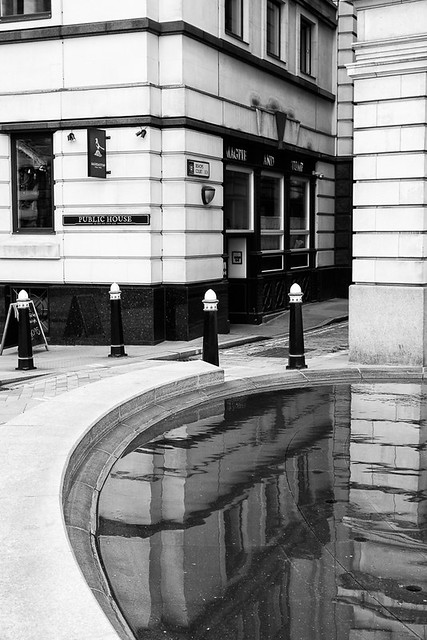The following two images are on an unmarked lane/street just off Paternoster square, so I assume it to be part of the square. Having photographed the square a couple of months ago I could have simply moved onto the next street, but you can see why I didn't. The two sculptures are actually air conditioning cooling vents, and amazing ones at that.
And then I took another image of the sculpture from Amen Corner.
The road going from left to Right in the above picture is Ave Maria Lane, of which there is not too much to talk about, other than the sculptures.
At this southern end of the lane is Ludgate Hill to the West and St. Paul's Churchyard to the east, which goes straight past the main entrance to the Cathedral. Of course the obvious thing to do here was to photograph someone holding up a big advertising board for a fish and chip restaurant. I have no idea what the fish and chips are like, but just follow the arrow to the right and you will find the restaurant on Carter Lane.
Just off Paternoster Square and going around the north side of the cathedral is Paternoster Row.
This then turns back into St. Paul's Churchyard according to the maps, and then depending on which map you look at back into Paternoster Row. However the street sign on the wall just by where I took this shot said it was St. Paul's Churchyard.
Off the row and leading heading north to Newgate Street is Queens Head Passage.
Jumping around a bit now back to Ave Maria Lane which heading north turns into Warwick Lane.
Just off of here is a little Square called Warwick Square, where I have a rare shot in colour.
More jumping again and back to the south side of the cathedral. Peter's Hill leads you down to the Millennium or Wobbly bridge. What appears to be just one street is actually with Peters' Hill forking to the west to become Sermon Lane. You could easily miss this uninteresting fact, as I did previously when I photographed the "hill" but I had to come back to get Sermon Lane.
At the top of the above image is another tiny little street I also hadn't noticed before. It has the great name of Knightrider Court, and if you are of a similar age to myself you will no doubt be humming a theme tune from a time when David Hasselhoff was cool not just in Germany.
The court is no longer than what you can see in the image above. The figure above is heading down the similarly greatly names Knightrider Street.
One final jump takes us to the also wonderfully named Old Fish Street Hill which is Just off Queen Victoria street and leads up to Cannon Street and St. Paul's Churchyard via Distaff Lane.
And that takes us up to the end of April, so still a fair bit behind on this blogging lark.

